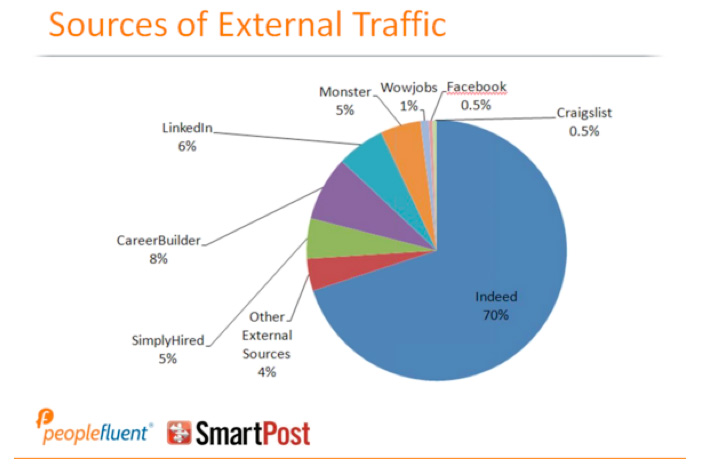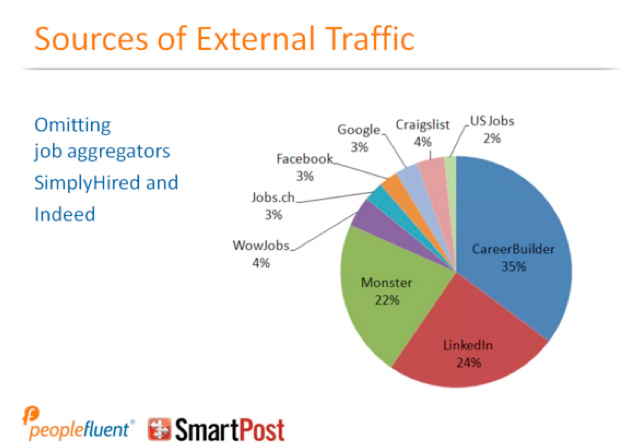There seems to be a fascination with the intersection between a person’s quest to find meaningful employment and the technologies that enable such an individual to be successful in that venture.
In fact, if I were to categorize the questions that I get from our clients, more than 50% of the inquiries relate to this issue. Owners and Hiring Mangers often have questions such as …
- How does top talent evaluate new opportunities when they become dissatisfied with their current employer/career?
- What really gets a candidate’s attention?
- What impact have online social networks had on candidate behaviors?
- Where are candidates going on the internet to find jobs?
…and many more.
As you probably know, this is a complex topic. The Tidemark team spends most of our working hours trying to find answers to these questions. As insights are gained, we use this information to tweak our methodologies and optimize our results.
Last week, I captured some new insights that I think are worth sharing. The new information came in the form of research that was recently conducted by PeopleFluent, a talent management company headquartered in Raleigh, NC. The research was co-sponsored by SmartPost, a subsidiary of the Bernard Hodes Group, a prominent global HR consulting firm.
The researchers cataloged the performance of more than 27,000 job boards, company career pages, and other employment-related internet destinations in the first six months of 2012. The database evaluated the behavior of more than 45 million employment related website visits across a diverse set of industries and locations (global).
Here are some of the findings:
1. General source of the hire. About 55% of candidates who eventually are hired come from outside sources, such as job boards and other career-related sites. About 45% of candidates come from internal sources, such as employee referrals and company-sponsored career pages (ie. what is behind the “career tab” on your home page).
2. Impact of Job Aggregation. The biggest surprise in the research is the continued growth of job aggregators — particularly Indeed.
A job aggregator is an employment website that collects job postings from many other sources and lists them on one site. In essence, it’s a search engine for job opportunities.
If you were to go onto Google and type in “Italian Restaurants Seattle,” Google would return a list of appropriate entries. If you were to go to Indeed and type in “Marketing Jobs Seattle,” an appropriate list of job openings would be returned. An Indeed listing could connect the candidate directly to an employer’s website, or refer a candidate to a job listing on another job board, such as Monster.
What does this mean for a real estate company? In order to be effective at sourcing candidates, you’ll have to become increasingly proficient at search engine optimization (SEO). Even if you post ads on prominent job boards, such as Monster and CareerBuilder, your job opportunity may not be prominently displayed in a job aggregator like Indeed unless it is optimized for their environment. And without getting Indeed’s traffic (three out of four job searchers start there), the chances of getting your job opening viewed is greatly diminished.
Indeed is applying a principle that is nearly ubiquitous on the internet: Influence cannot be bought, it must be earned.
3. LinkedIn is starting to have an impact on candidate behavior. If you take the job aggregators out of the previous slide, here is how the rest of the major players in candidate sourcing rank:
You’ll notice right away that LinkedIn has recently become a significant force among traditional job boards. This is a new development that may be attributed to the increased direct sales effort they recently placed on the job search part of their business.
Does this mean that public social networks will have a new place at the candidate sourcing table? Probably not. Facebook is a minor player and will probably remain so unless their newly announced job board initiative gains traction (and it has very little to do with being a social network). LinkedIn didn’t start to prosper in the candidate sourcing arena until they started selling and acting like a job board.
The big coup in the candidate sourcing marketplace is the dominance of Indeed. Just like you’d be foolish to start a high volume website without considering how Google would impact traffic, candidate sourcing plans now have to compensate for the dominance of Indeed.
Bottom line: Most recruiting problems start out as sourcing problems. It’s tough to be selective and commit yourself to hiring the most talented individuals without an abundance of individuals from which to choose. The first step to “getting to yes” with your talented new hires is being able to frequently say “no” to the candidates who are not a fit.
 Editor's Note: This article was written by Ben Hess. Ben is the Founding Partner and Managing Director of Tidemark, Inc. and a regular contributor to WorkPuzzle. Comments or questions are welcome. If you're an email subscriber, reply to this WorkPuzzle email. If you read the blog directly from the web, you can click the "comments" link below.
Editor's Note: This article was written by Ben Hess. Ben is the Founding Partner and Managing Director of Tidemark, Inc. and a regular contributor to WorkPuzzle. Comments or questions are welcome. If you're an email subscriber, reply to this WorkPuzzle email. If you read the blog directly from the web, you can click the "comments" link below.



